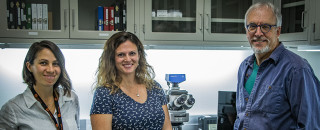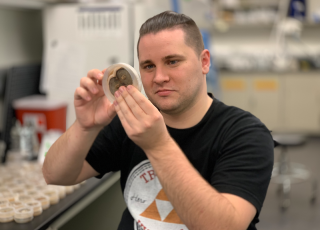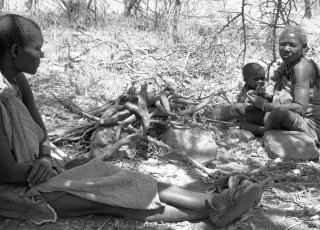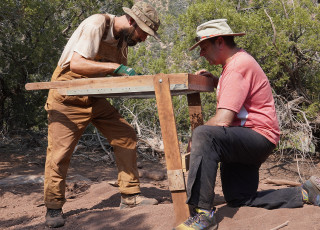Good News About Carbs, Told by Archaeobotanists
By Michael Mozdy
Sure, a well-crafted artisan bread, substantial crust browned by Maillard reactions, is delicious. Don't get me started on the many wonderful versions of pasta. But this isn’t a food blog, and this news about carbs has less to do with enjoyment and more to do with history.
Archaeobotanists are thrilled with carbs because they offer some of the best clues about what ancient peoples ate. Amid the fervor surrounding no-carb and low-carb diets, let’s reflect for a moment on humans’ long-term relationship with carbohydrate food sources. We might find a good reason for keeping the potatoes on the menu.
Humans and Carbs: A Long-Term Love Affair
Archaeobotanists, also called paleoethnobotanists, study plant remains in archaeological sites to gain insight about ancient cultures and their relationships to plant foods. They are piecing together how and when ancient peoples domesticated wild plants. It turns out that nearly every ancient culture has found accessible nutrition from a multitude of starchy sources. Even the “paleo diet,” initially thought to be carb-free, has been shown to be carb-loaded, as scientists found a stone-age pestle covered in starch grains in a 33,000-year-old cave in Italy.
Lisbeth Louderback is the Curator of Archaeology for the Natural History Museum of Utah, assistant professor in the University of Utah Anthropology Department, and our resident archaeobotanist. Louderback explains, “Carbohydrates are packed with energy, which is why animals (including humans) require them for sustenance. We have been collecting and processing plant foods that are rich in carbohydrates for hundreds of thousands of years and we continue to do so today.” Over our long existence on the planet, humans have consumed a wide variety of wild plant foods, many of them containing carbs like tubers, cereals, and underground plant stems that were sometimes ground into flour. Of course, they ate a ton of other carb-free, protein-rich foods like worms, insects, grubs, and larger vertebrates they could catch and kill.
Ancient people were relentless and resourceful in their search for foods, but determining exactly which foods were collected and consumed requires some detective work. Archaeobotanists investigate archaeological features where foods were clearly processed or cooked, such as hearths or roasting pits. Resilient food items such as seeds and nuts preserve well in archaeological deposits, but perhaps even more resilient are microscopic starch grains. “Fleshy fruits and tubers don’t preserve in archaeological records,” explains Louderback, “so we sometimes have to rely on microbotanical residues.” Micro is the key word here – the stuff Louderback studies can’t be seen by the naked eye. Under the microscope, Louderback finds pollen, phytoliths (when you run your fingers up and down a grass stem and they get sticky, you’ve discovered phytoliths, which are microscopic silica structures), and starch grains.
Read The Tiny World of Starch Grains to learn more about the biology of these fascinating structures.
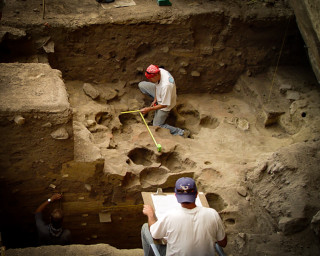
Starch grains turn up in the most unlikely places (albeit obvious when you think about it). Take for example, the study that found starches on the teeth of ancient peoples in Peru, some 7,000-8,000 years ago (I keep telling my son that the toothbrush is a good invention). A study of even older remains – Neanderthal teeth from 44,000-50,000 years ago – also revealed starch grains. Some of the grains showed signs of being cooked, which debunks a myth about the extinction of our Neanderthal cousins: it wasn’t the fact that they only ate meat or that they didn’t know how to use fire to cook starchy foods.
As Louderback delved into the microscopic world of starch grains, she encountered some issues: archaeologists were jumping to conclusions about past human diets based on sometimes just a single starch grain recovered from an artifact or dental calculus. The more she looked at starch under the microscope, the more unlikely it seemed that identifying the plant source could be based on such a small sample.
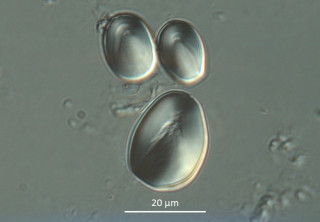
Louderback published a paper in June 2016 after conducting extensive work with her colleagues, Nicole Herzog and Bruce Pavlik. In it, they describe why it takes a large sample size of archaeological starch grains to a) make a confident taxonomic identification of the plant, and b) identify unique features of the grain. Read The Tiny World of Starch Grains to learn more about Louderback’s new findings.
Looking Back in Order to Look Forward
Louderback is committed to a foundation of solid science. “Archaeologists need to understand the biology and ecology of the things they study,” she says. Only by delving into the world of starch biology was she able to understand that starch grain sizes and shapes impact how archaeobotanists interpret the archaeological record.
But plants aren’t static things. Through selection and domestication, humans change the biology of the plants they use. Seed coats become thinner in many domesticated plants – this speeds germination of the plants and can create a more palatable food. Starch grains may also increase in size if the plant has been cultivated or domesticated – this is something that Nicole Herzog, a postdoctoral research associate at NHMU, is currently studying. It’s the interplay between plants and humans that fascinates archaeobotanists like Louderback.
“I prefer archaeological sites with stratigraphy where we can investigate changes in diet over time,” says Louderback. She studies sites in the Great Basin, on the Colorado Plateau and in the Four Corners region that have been occupied by people for the past 12,000 years. This allows her to examine how and why diets changed over time in the same place. This is important because it tells a story of how humans have adapted to an ever-changing landscape.

Much has been written about the challenging landscape of modern agriculture. The bulk of the world’s food sees some form of pesticide, herbicide, or chemical fertilizer application. Pests and weeds have started to adapt. We are in an era of monocropping, genetic modification, and agribusiness. As a home gardener, perhaps the most concerning thing to me is that there has been a shift in who grows food. While many, if not most, of the population helped to grow, gather, or hunt for food in the past, now the means of growing food is in the hands of very few people. What happens if a link in the complex modern food chain gets broken?
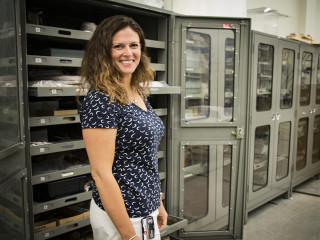
Whatever one’s beliefs about whether these changes are positive or negative, we can agree that modern humans’ approach to agriculture is drastically different from the cultures found in our archaeological records. I wonder if an ancient food source, grown locally, would provide gardeners like me with a deeper connection to our agricultural roots. We’ve seen plants like amaranth and quinoa, all but forgotten, make a big comeback in modern diets. The prospect of rediscovering an ancient food and reintroducing it into modern culture is one that excites Louderback, too.
One thing is certain: carbohydrate-rich foods are prolific in nature, and we’ve evolved as a species in part because we recognized the importance of these foods in our diet. Today, we thrive on some highly processed as well as unprocessed carbohydrates – all of which we are inadvertently leaving as the archaeological record for future scientists to uncover in our garbage dumps, homes, and picnic areas. To that end, I’m happy to do my part to keep the story of humans and carbs alive and well. Pass those roasted root veggies because I’ve got some grey salt, olive oil, and a healthy appetite!
Michael Mozdy is a Digital Science Writer for The Natural History Museum of Utah, a part of the University of Utah in Salt Lake City. Our mission is to illuminate the natural world and the place of humans within it. In addition to housing outstanding exhibits for the public, NHMU is a research museum. Learn more.
